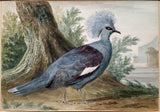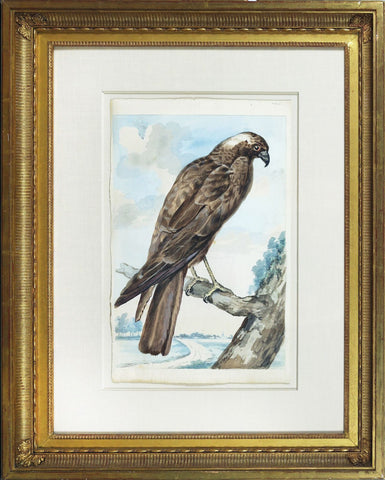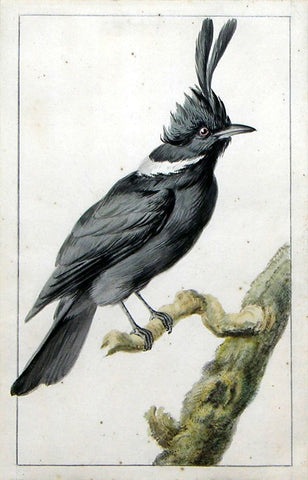Aert Schouman (1710-1792) A Crownbird at the Foot of a Tree, a Terrace in the Background
Aert Schouman (1710-1792) A Crownbird at the Foot of a Tree, a Terrace in the Background
Black chalk, watercolor, pen and ink framing lines Inscribed verso: illegible inscriptions and A. Schouman
Inscribed on mount: G.T. 4 and Kroonduit uit Java and A Schoum
Framed to full museum specifications
Paper size: 11 1/8” x 15 7/8”
Framed size: 21 1/2” x 27 1/2”
Aert Schouman was a prolific artist who specialized in flower painting and engraving on glass, but was foremost in the art of natural history painting. After training with F. Greenwood and Adriaen van den Burg, he became a master painter at The Hague in 1748, and three years later regent of the art academy. By 1762 he had been appointed principal of the academy and included among his pupils the great Dutch flower painter Jan van Os. Schouman was fortunate to receive royal patronage and completed many works for Prince Willem V at the summer palace of Het Loo, at Apeldoorn. The Prince owned a zoological cabinet and a menagerie which contained mammals, snakes and birds from various parts of the world. Although newly arrived exotic birds were popularly depicted, the favorite bird subjects in the eighteenth century were still live domestic poultry, followed by dead partridges.
Among the domestic birds, new breeds were being developed and pyle, hamburg and bantam cocks began to appear. Hens with their chickens were very popular, although the young of most every other species (with the exception of ducklings and goslings) were ignored. Between 1765 and 1768, Schouman was employed in the pictorial recording of the animals at Willem V’s palace at Het Loo. Over one hundred drawings by him can be found in one of the few surviving complete recueils, the Vogel Broeck (the Bird Book). Moreover, Schouman’s depictions of the animals housed in the royal menagerie, along with those of Simon Fokke, formed the core of thirty-four treatises on foreign animals, published between 1767 and 1787 by Arnout Vosmaer. Their illustrations were accompanied by descriptions written by Peter Simon Pallas.
We Also Recommend








